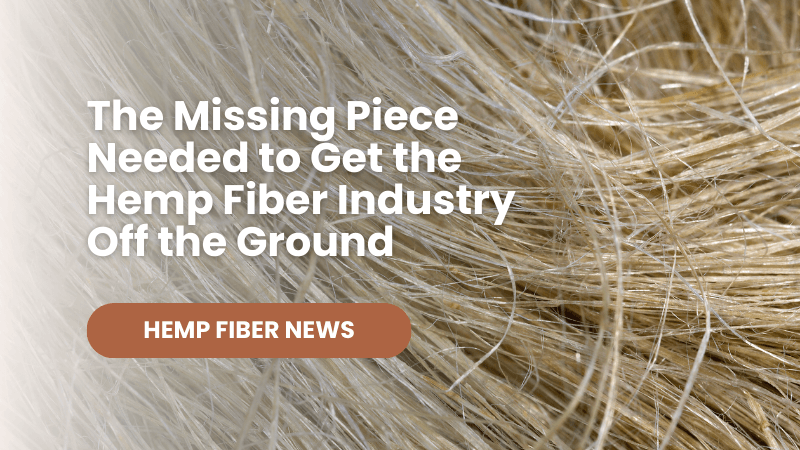Blog ► The missing piece needed to get the hemp fiber industry off the ground
The Missing Piece Needed to Get the Hemp Fiber Industry Off the GroundPosted: 07/08/22 | Author: Lawrence Serbin When Will We Start Growing Hemp for Fabric in the United States?A question frequently asked is: “When will we start growing hemp for fabric in the United States?” Hemp has been legal to grow since 2018 and has been successfully cultivated for CBD flower and grain. But not much has happened on the fiber front. What needs to happen to get the hemp fiber industry off the ground? The Need for Purpose-Grown Fiber HempTo be successful, farmers need to grow hemp purposely for fiber. Hemp grown for fiber provides better quality bast and hurd compared to hemp cultivated for flower or grain. Fiber hemp is planted at a dense rate of 75-100 pounds of seed per acre. This results in thinner stalks, finer fibers, and a greater yield. Fiber crops provide around eight to ten times the yield of bast and hurd compared to flower or grain crops. This crop is harvested just prior to flowering, resulting in higher value fiber with fewer lignins and pectins. Limited Processing Equipment as a BarrierThe main reason we are not seeing hemp grown for fiber is the limited processing equipment needed to harvest and decorticate the stalks. Converting hemp flower into concentrated CBD can be done in a small lab or even a kitchen. And harvesting and cleaning hemp seeds uses existing agricultural technology. But due to the lack of infrastructure for hemp fiber, farmers are not growing the acreage required to make hemp processing feasible. Modern Textile Mills and Yield RequirementsThe average yield of hemp bast fiber is about 1600 pounds per acre. Modern textile mills need to produce tens of thousands of yards of fabric per day to be efficient and competitive. A small amount of hemp grown cannot justify all the machinery needed to harvest the crop, decorticate the stalk, and process the fiber. This equipment alone would be in the millions of dollars. Much more hemp is needed to make this viable.
The hemp fiber industry is between a rock and a hard spot. Farmers don’t want to grow hemp until there are companies that can process the fiber. And processors don’t want to invest in equipment until there are enough farmers cultivating the plant. The Key Innovation: Green DecorticationHarvesting and Decortication Must Happen SimultaneouslyTo get hemp fiber into the market at a decent price, one main innovation needs to happen. Fiber hemp needs to be harvested and decorticated at the same time while the plants are still green. Green decortication refers to separating the bast from the hurd in the field while the plants are still growing and alive. Green hemp is easier to decorticate than dried hemp, resulting in a more complete separation of bast and hurd. When the harvesting and decortication are done simultaneously, the quality of the fibers is more homogeneous. Methods using water or dew retting are subject to variables such as temperature and humidity, leading to fiber that is not consistent in quality. Benefits of Green DecorticationHarvesting combined with green decortication will be cheaper and more practical, providing several benefits:
Challenges and Opportunities in Machinery DevelopmentThis is the main hurdle to getting fiber hemp off the ground. No current machinery exists that can harvest and decorticate at the same time. Yet both processes are already being used with other crops. Hemp is easily harvested with a sickle bar. And a similar fiber crop, jute, is decorticated with existing machinery. The key is to combine both processes into one harvester. A Win-Win for Farmers and the IndustryOnce the machinery is in place, both fibers will be available to the various industries that use them. Farmers could sell the bast fiber to make yarns and textiles while the hurd would be used for the building and composite industries. The raw materials will be competitive with similar fibers, and the farmers would earn more money, resulting in a win-win situation. |